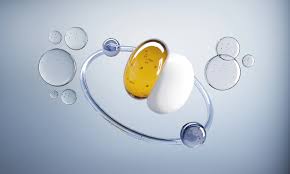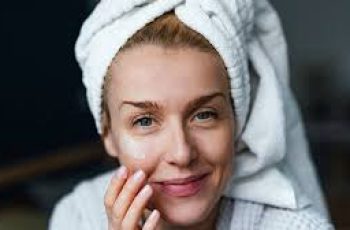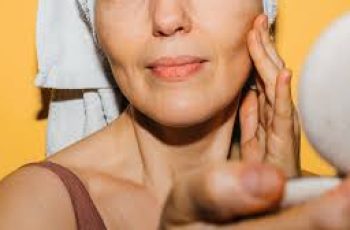
Can You Use Hyaluronic Acid and Glycolic Acid Together?
Yes, they both have the name acid, but each provide different benefits, and more importantly, work wonderfully together. The question is, how exactly can you use hyaluronic acid and glycolic acid together? And what exactly are the benefits you can expect to see when layering them both in your skincare routine. Stick around as we will investigate together how you can benefit from combining these two powerhouse ingredients.
What goes first glycolic acid or hyaluronic acid?
When it comes to using hyaluronic acid and glycolic acid, although both are called acid, they are in fact quite different. Glycolic acid is a member of the Alpha Hydroxy Acid (AHA) family and can provide exfoliation to the top layer of the skin, by helping to slough away dead skin cells and debris whilst unclogging the pores of excess sebum, dirt, and bacteria. If left you’ll find the pores become blocked which results in blackheads, blemishes, and spots. It is because of the exfoliating benefits of glycolic acid I suggest using it first as you’ll find that the hyaluronic acid enriched product you use after will absorb quickly and effectively into the skin.
Having said that, if you find you have a skin type that is prone to feeling tight and mildly sensitive to combat this you can try applying hyaluronic acid first followed by glycolic acid. By doing this you are ensuring the skin barrier is fully hydrated and able to absorb any ounce of water surrounding the skin, or other formulations resulting in a complexion that thrives with a continuous boost of hydration.
What can you not mix with glycolic acid?
Since glycolic acid is a chemical exfoliant it is considered best to not mix it with other exfoliants, such as members of the Alpha Hydroxy Acid (AHA) such as lactic acid and Beta Hydroxy Acid (BHA) such as salicylic acid. By avoiding using these ingredients together you are not overworking the skin causing it to become stripped of the vital water and oil it needs to remain in its healthiest state. What you may find is by using these acids together the skin will become tight, uncomfortable, and dry with the sebum (the natural oil in the skin) being over-produced causing the face to become oilier. This can then lead to breakout in spots, blackheads, and other imperfections.
You will also find it best to avoid using niacinamide and glycolic acid together as they both have similar pH levels which can cause an imbalance to the skin which often results in allergic reactions.
If you are wanting to find out more about, what can you not mix with glycolic acid, you can check out the dedicated blog post.
Can I use glycolic acid and hyaluronic acid and niacinamide?
The short answer is, yes you can, the longer one is you can use all three ingredients together if you apply them in the correct order. By this I mean knowing the best time of day to use which ingredient to gain optimal results. For example, after cleansing you can use an exfoliating toner enriched in glycolic acid to help slough away the remaining debris and layer of dead skin cells on the surface of the skin. You can then follow this with a serum enriched in hyaluronic acid that will help lock moisture into the skin and keep it hydrated throughout the day. You may even find that some product formulations contain both ingredients for more of an impact compared to using them separately, but this also boils down to personal preference. As for using niacinamide in your daily skincare routine, I would suggest applying it in the evening as the antioxidant benefits and humectant properties will give this clever powerhouse to reverse any damage caused to the skin throughout the day and leave you in the morning with a plumped, hydrated complexion.
What should I put on my face after glycolic acid?
After using glycolic acid, it is best to apply a hydrating serum or moisturiser that is enriched in a hydrating ingredient, such as hyaluronic acid. By doing this you are ensuring the fresh and newly surfaced skin cells benefit from a continuous boost in hydration throughout the day. You’ll also find that with the protective skin barrier is strengthened and able to function correctly. This results in it ensures it can protect the skin and ward off any damage caused by exposure to free radicals, such as UV exposure, pollution, and other environmental aggressors.
One other vital product you need to apply to the skin after glycolic acid is a SPF of 30 and above to ensure the skin is protected and able to combat skin damaging UVA and UVB rays.
Is glycolic acid or hyaluronic acid better for wrinkles?
The beauty of glycolic acid and hyaluronic acid is the fact you can use both together! Quite often you’ll find when there is a build-up of dead skin cells the complexion can begin to look dull, dry, and lacklustre with fine lines and wrinkles appearing to look worse than they are. By using the chemical exfoliating benefits of glycolic acid, you are removing this layer and revealing new, vibrant, and youthful looking skin, minimising the appearance of any signs of ageing.
As for using hyaluronic acid, many often mistake dehydration lines on the skin to be premature signs of ageing. This is when the hugely beneficial hydrating properties of hyaluronic acid can keep the complexion plumped, moisturised and line free. As I have already mentioned, you can use both powerhouse ingredients separately, or use a potent formulation containing both.
Can you use glycolic acid every day?
Yes and no, this is very much dependant on your skin type as those with dry skin which is prone to sensitivity should use glycolic acid every other day to avoid stripping the skin. Not forgetting of course that it is best to consult with a doctor or dermatologist to ensure it is safe to use a new product. Another point to remember is the concentration of the glycolic acid plays a part in how frequently you can use it. Finally, if you are new to using glycolic acid many experts suggest you introduce it slowly into your routine to avoid any unwanted irritation or allergic reaction.
There you have a little more information about using hyaluronic acid and glycolic acid together, remembering of course if you have any questions, don’t hesitate to follow us on Instagram.


